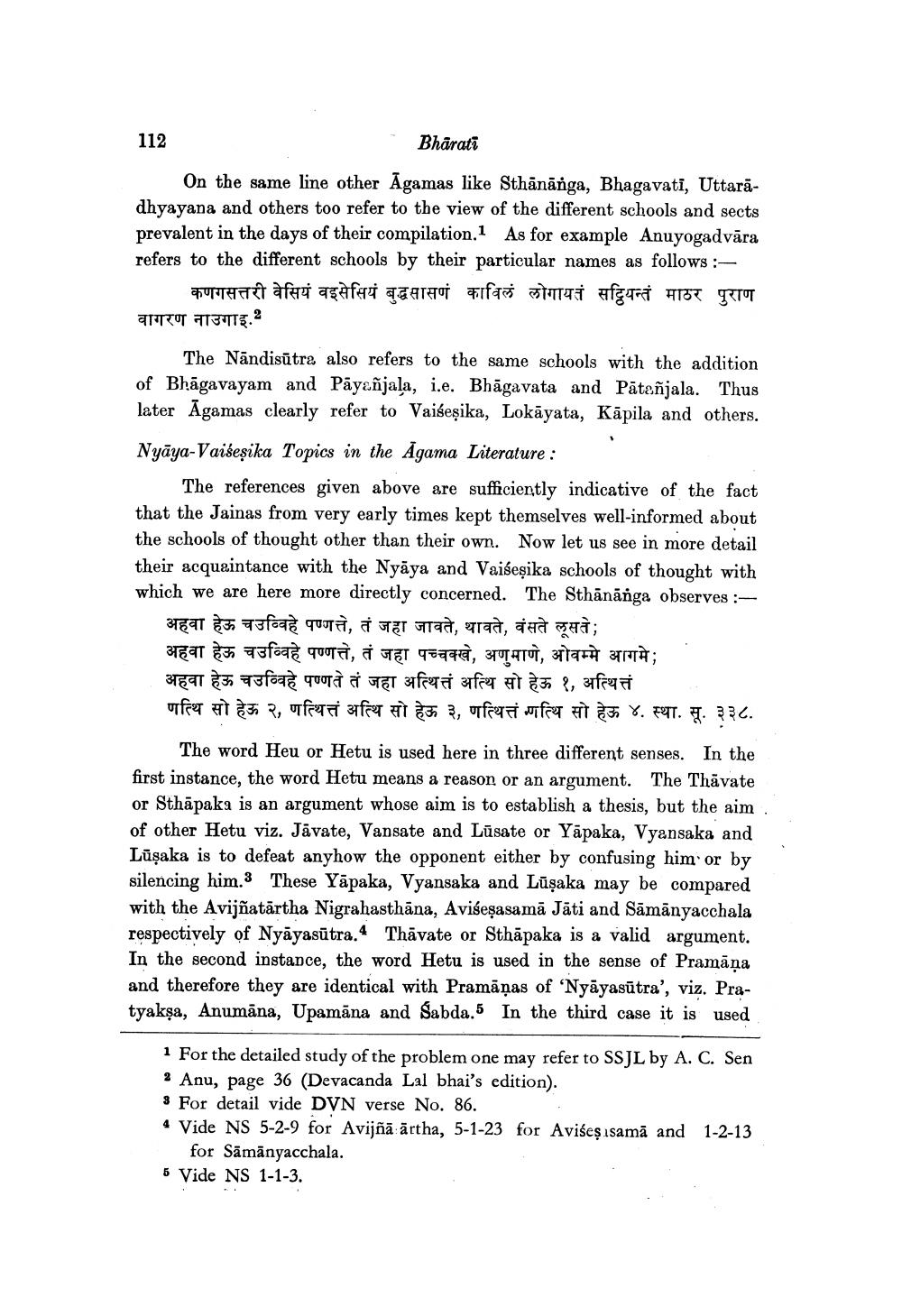Book Title: Contribution Of Jaina Writers To Nyaya Vaisesika Literature Author(s): J N Jaitley Publisher: J N Jaitley View full book textPage 8
________________ 112 Bharati On the same line other Āgamas like Sthānānga, Bhagavati, Uttaradhyayana and others too refer to the view of the different schools and sects prevalent in the days of their compilation. As for example Anuyogadvāra refers to the different schools by their particular names as follows : कणगसत्तरी वेसियं वइसेसियं बद्धसासणं काविलं लोगायतं सट्रियन्तं माठर पुराण वागरण नाउगाइ. The Nāndisūtra also refers to the same schools with the addition of Bhāgavayam and Payañjala, i.e. Bhāgavata and Päteñjala. Thus later Āgamas clearly refer to Vaišeșika, Lokāyata, Kāpila and others. Nyāya-Vaiseșika Topics in the Agama Literature : The references given above are sufficiently indicative of the fact that the Jainas from very early times kept themselves well-informed about the schools of thought other than their own. Now let us see in more detail their acquaintance with the Nyāya and Vaiseșika schools of thought with which we are here more directly concerned. The Sthānanga observes : अहवा हेऊ चउबिहे पण्णत्ते, तं जहा जावते, थावते, वंसते लूसते; अहवा हेऊ चउव्विहे पण्णत्ते, तं जहा पच्चक्खे, अणुमाणे, ओवम्मे आगमे; अहवा हेऊ चउव्विहे पण्णते तं जहा अत्थितं अत्थि सो हेऊ १, अत्थित्तं णत्थि सो हेऊ २, णत्थित्तं अत्थि सो हेऊ ३, णत्थित्तं णत्थि सो हेऊ ४. स्था. सू. ३३८. The word Heu or Hetu is used here in three different senses. In the first instance, the word Hetu means a reason or an argument. The Thăvate or Sthāpaka is an argument whose aim is to establish a thesis, but the aim of other Hetu viz. Jāvate, Vansate and Lūsate or Yāpaka, Vyansaka and Lūşaka is to defeat anyhow the opponent either by confusing him or by silencing him.3 These Yapaka, Vyansaka and Lūşaka may be compared with the Avijñatartha Nigrahasthāna, Aviseşasamā Jāti and Sāmānyacchala respectively of Nyāyasūtra. Thāvate or Sthāpaka is a valid argument. In the second instance, the word Hetu is used in the sense of Pramāņa and therefore they are identical with Pramāņas of 'Nyāyasūtra', viz. Pratyakşa, Anumāna, Upamāna and Sabda.5 In the third case it is used 1 For the detailed study of the problem one may refer to SSJL by A. C. Sen Anu, page 36 (Devacanda Lal bhai's edition). 3 For detail vide DVN verse No. 86. * Vide NS 5-2-9 for Avijñā ārtha, 5-1-23 for Aviseşasama and 1-2-13 for Sāmānyacchala. 5 Vide NS 1-1-3.Page Navigation
1 ... 6 7 8 9 10 11 12 13 14 15 16 17 18 19 20 21 22 23 24
